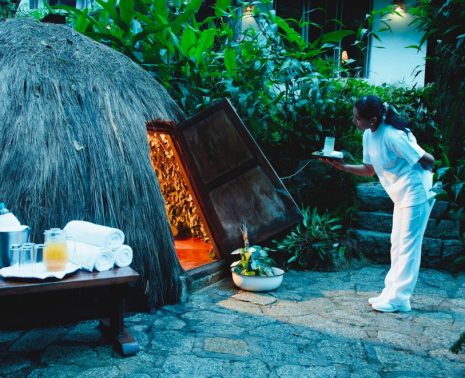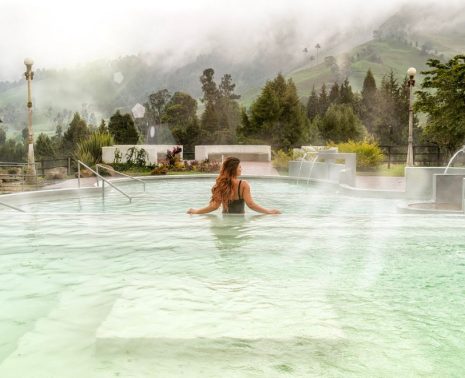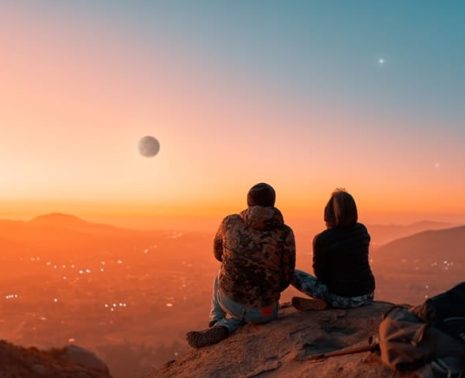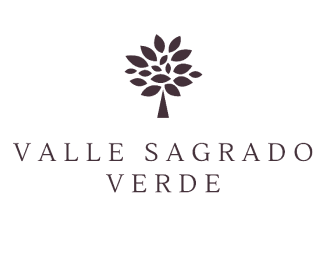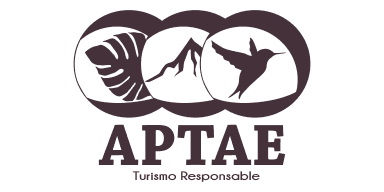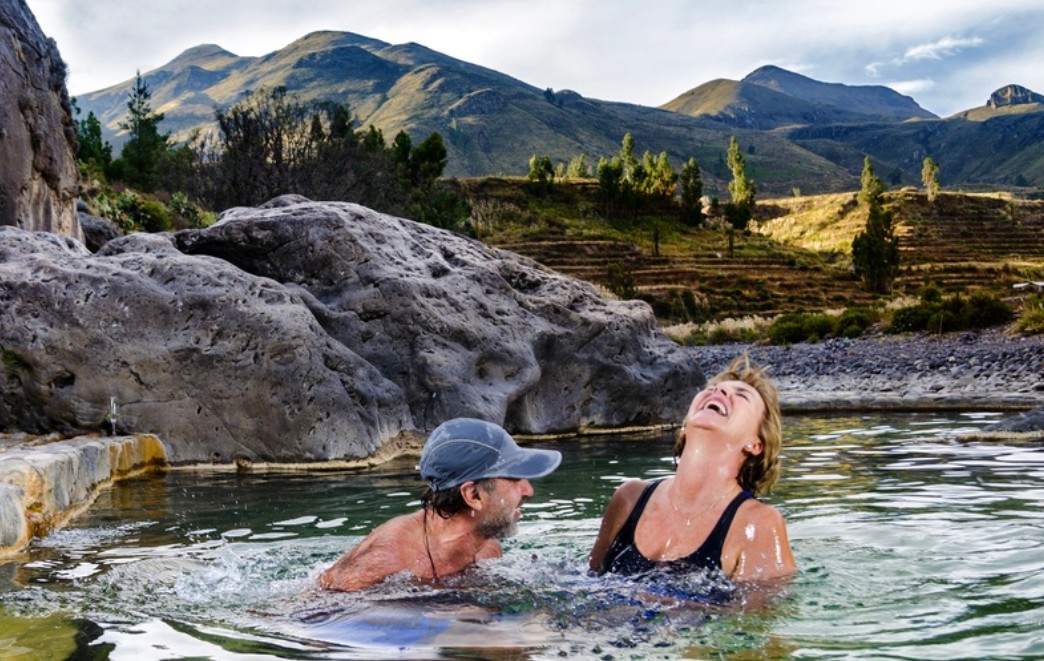
Hot springs are a result of volcanic activity. With 17 Holocene volcanoes, Peru has plenty of that going on! It’s thanks to this natural phenomenon that you can find hundreds of healing hot springs in Peru. Heated by magma running just below the earth’s surface and pushed up into pools through cracks and gaps, the hot spring water is rich in minerals that offer everything from relaxation to relief from muscle aches and pains.
No wellness journey to Peru would be complete without a dip in the medicinal waters located all around the country. Learn more about some of Kuoda’s favorite spots, both popular and off-the-beaten-track, in this guide to Peru hot springs.
The Best Healing Hot Springs in Peru
From the high Andean mountains to the coast and the jungle, Peru has hot springs dotted all over its map. But not all hot springs have those same healing vibes that you’re looking for on a deep dive into wellness.
With that in mind, we’ve scoured our resources to bring you the best recommendations for healing hot springs in Peru. No matter where you’re traveling, you’ll be close to mineral-rich, therapeutic waters no more than a few hours away.
Cusco: Baños Termales de Lares
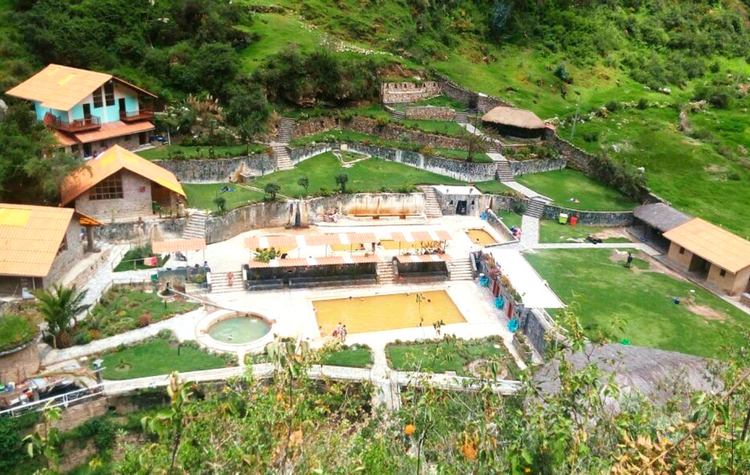
Photo Source: Facebook Baños Termales de Lares
The Baños Termales de Lares are located in the Lares Valley, just a hop, skip, and a jump from the infamous Sacred Valley of the Incas. These Incan baths fill with hot spring water from the surrounding Andean foothills and they’re some of the hottest in Peru, ranging from 98.6° F to 118.4° F.
Overlooking the stunning Vilcanota River and surrounded by mountains at an altitude of nearly 10,600 feet, the natural setting of these hot springs is healing in and of itself. But it’s the murky yellowish-brown water where you’ll really get to unwind, let go, and surrender. The not-so-lovely color of the water is the result of all the minerals contained within it, said to be particularly helpful for those with joint pain and even arthritis.
While you may be heading to Lares to receive the healing of the hot springs, there are many other activities here that may add to that objective. Lares is a great place to go trekking into the valley, with multiple treks and circuit trails through tiny indigenous communities, past gorgeous alpine lakes, and into the untouched nature of Peru.
Can’t make the journey out to Lares? You’ll surely be visiting Machu Pichu while you’re here. Consider checking out Aguas Calientes, some of the most popular hot springs in Cusco, Peru.
Arequipa: Colca Canyon
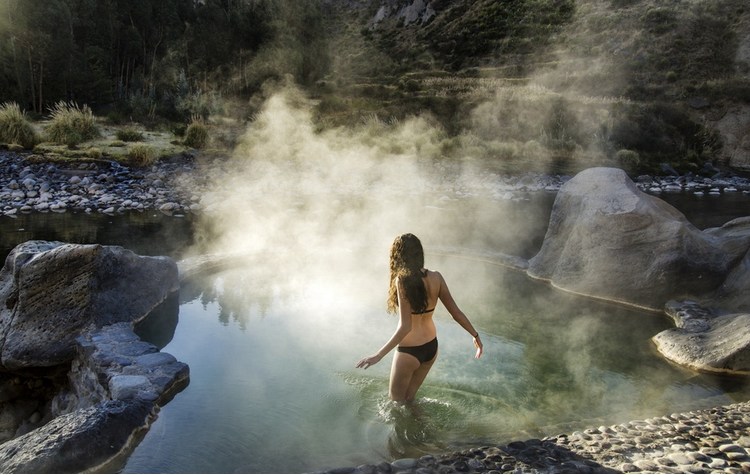
Photo Source: colca-lodge.com
No more than three hours from Arequipa is Colca Canyon, and within Colca Canyon, the best place to experience hot springs has to be Colca Lodge Spa & Hot Springs. Unlike the other hot springs in Peru we’ve listed here, these are not open to the public. They’re located on the private grounds of this well-known, luxurious resort center.
The Lodge has four natural and hot thermal baths that are completely exclusive to guests. From this intimate and private setting, you can take in the breathtaking landscape surrounding the property, in almost complete isolation. Within minutes, you’ll feel more relaxed as a result of the high amount of lithium in the baths.
Fortunately, Colca Lodge isn’t the only place from which to enjoy the thermal baths running through the second deepest canyon in the world. The most famous and popular of all the public baths here are La Calera, but for something a little less busy and a little more tranquillo, check out Tambo or Chacapi.
Zorritos: Hervideros Mud Baths
Lucky for beach lovers, the opportunity for healing waters isn’t exclusive to the mountains and canyons of this country. In fact, one of the most intriguing places to experience a curative swim is located in Zorritos, about four hour’s drive from the larger coastal city of Piura.
Instead of a hot spring, here you’ll find mud pots. Mud pots form when the water from a natural hot spring mixes with clay and dirt before reaching the surface of the earth. They offer just as much healing properties as a hot spring, but with some messy fun.
Each of the mud pools in Zorritos is a different size and temperature, and each has a different concentration of minerals that contribute to how it helps soothe the soul. Make sure you bring a small bottle to take some of the mud home for later.
Cajamarca: Los Baños del Inca
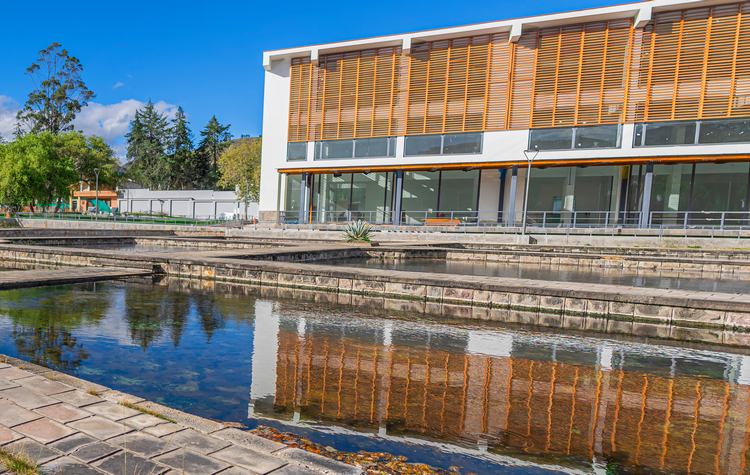
Cajamarca is possibly one of the most underrated cities in Peru. It’s historic, has a rich culture, is surrounded by beautiful scenery, and it’s not too far from some of the most important hot springs in Peruvian history. Indeed, it’s believed that the Inca emperor Atahualpa was soaking in these very baths when the Spanish army arrived in this part of the continent.
The hot spring waters come from volcanic origin, bringing with them the minerals of volcanic rock and magma along with all of those carried through the stone beneath the earth’s crust. The result is healing baths that can treat conditions of the bones, nervous system, skin, and even inflammation of the gut.
Sustainable Practices for Natural Hot Springs Peru
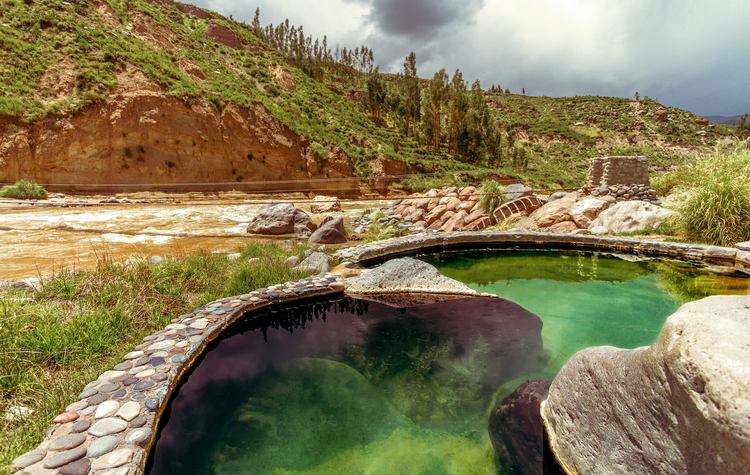
Hot springs are natural phenomenon that require protection. As a responsible and ethical green tourist, there are a few things you can do to honor the hot springs and the healing they provide, protecting and preserving them so future generations can also receive those gifts.
Firstly, the hot springs are not a bathtub. The fragile ecosystem of a hot spring and the delicate combination of minerals they contain are easily disrupted by chemicals. For that reason, leave your hygienic products at home (i.e. soap, shampoo). Even natural soaps and shampoos can be disruptive, so take your shower in the facilities provided at many of these sites after your dip.
At many of these hot springs, you’ll be permitted to have beverages by the pools. Avoid using glass when drinking in the waters. Glass is easily broken (especially because you’re slippery when wet), and those pieces can be difficult to clean up in some of the more rustic hot springs. And if glass gets into the pool itself, you’re creating a bigger mess than you can handle yourself. Use a reusable cup or water bottle instead.
In general, you should leave any natural setting looking cleaner than you found it. That means taking all of your trash with you, and maybe even packing out trash that’s not yours, too.
Finally, while many hot springs in the US and Canada may be clothing-optional, hot springs Peru are not. Many of these springs are located on the traditional lands of indigenous communities, who have used them as sacred spaces for healing for hundreds of years. This is not the space to be walking around in your birthday suit, which could be considered offensive to the locals.
What to Bring to the Spring
Some hot springs in Peru are well-equipped for visitors. These developed, more luxurious hot spring options will have facilities ranging from showers to towels. But, for the most part, Peru’s hot springs are pretty rustic, which means you have to come prepared.
Don’t forget to pack these items:
- Towel. While the hot springs may be hot, the air around you in some of these places, especially at night, is anything but. It’s unlikely you’ll be able to rent a towel, so be sure to bring your own and have it close to you.
- Hat. Speaking of cold air, your head is sure to be cold if you’re swimming in the springs at night. Bring a wool hat or beanie to keep your head warm and stay in the pools for hours.
- Water shoes or sandals. Sandals are great for keeping your feet clean but some of these pools can be pretty slippery. For that reason, we recommend bringing water shoes with you for walking around and inside the pools.
- Lock. Some of these springs will have lockers for you to store your stuff. For peace of mind, bring a personal combination lock to keep your items secure.
- Drinking water. If you plan on spending a decent amount of time in the springs, be aware that they can be dehydrating. Drink plenty of water (from your reusable cup or water bottle, of course).
Many hot springs in Peru charge an entrance fee to help cover the costs of maintaining the pools. It’s never very expensive but be sure to bring some soles to pay your entrance.
Experience Wellness with Kuoda
The healing hot springs in Peru have benefits ranging from relaxation to pain relief. Even if nothing ails you, they’re the perfect place to spend some time soaking in mineral-rich waters and all the stunning views this country has on offer.
And for more healing activities across the sacred and ancient land of Peru, contact Kuoda to plan your wellness journey.
Kuoda’s Guide To Luxury Spas in Peru
Amongst its ancient civilizations and breathtaking landscapes, Peru offers a hidden treasure trove of luxuriou...
Read PostKuoda’s Top Luxury Wellness Experiences in Colombia
Over the years, Colombia has emerged as a haven for those in search of rejuvenation and tranquility. With its ...
Read PostHow to Enjoy the 3 Best Destinations For Wellness Travel in Chile
As more and more travel opportunities open up, some travelers will crave big thrills and spontaneous adventure...
Read Post

 Call
Call 







